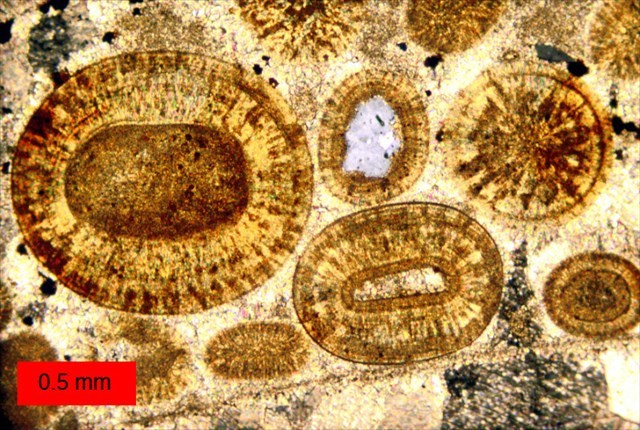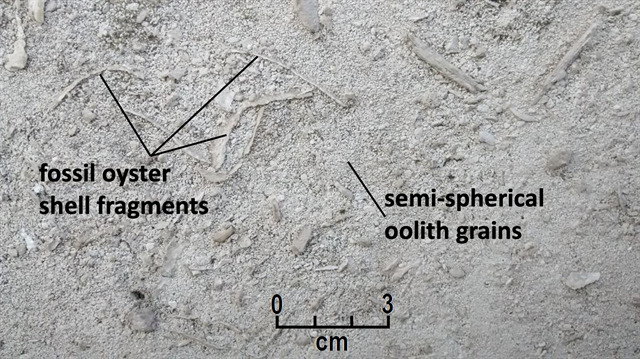This EarthCache, one of 3 produced for Geoweek 2018, is located at a former high street bank on Cheadle High Street, easily accessible from the pavement.
(This EarthCache is now part of the Cheadle GeoTrail Audio guide. This provides audio commentary on the geology of 4 EarthCache locations in the Cheadle area: 'Millstone Grind' (GC7MEBC), 'Rock of Ages' (GC7DHPN), 'Death in Paradise' (GC7MM93) and 'Memorial Rocks' (GC7NAFQ). This trail can be accessed by downloading the "SITUATE" app to a smart phone from the App Store and searching for 'Cheadle GeoTrail'. (https://situate.io/). This was produced to celebrate GEOweek 2023).
Most people will associate a bank with a repository for money but, in geology, the term also refers to a submerged limestone platform similar to that forming today in places like the Bahamas (Figure 1). This EarthCache will provide evidence that the natural building stone, used for the window sills and pavement plinth, originated in a ‘Bahama type’ environment that formed in southern Britain about 150 million years ago, during the Jurassic Period – when dinosaurs roamed the Earth!

Figure 1
The Geological Background
Limestone is a sedimentary rock composed primarily of calcium carbonate (CaCO3) in the form of the mineral calcite. Limestone most commonly forms today on the floors of shallow (a few metres only), warm and clear sub-tropical marine platforms or lagoons where the waters are subjected to high rates of evaporation resulting in the precipitation of calcareous mud (micrite). This process is similar to the build up of lime scale in a kettle in hard water areas. When nuclei of tiny sand grains or shell fragments are rolled around by strong intertidal currents in the limey mud of the seabed, each ‘seed’ is coated by concentric layers of calcite to form small (typically 0.25mm -1mm), spherical balls called ooids. These look much like small beads or fish roe (caviar) and the process of accretion is similar to the way in which a snowball increases in size as it is rolled around in the snow. As the ooids cement together an oolitic limestone is formed. (Figure 2)


Figure 2
The shallow water platform of the lagoon also promotes the accumulation of organic materials from the organisms that live in this environment and their broken remains are often clear to see in the rock as fossil fragments. From a quick survey, of the main fossils identified, oyster shells predominate, along with other bivalves, sea urchin spines, plus coral, algal, and faecal debris. Each one of the fossils protruding from the weathered rock surface represents one small ‘death in paradise’! (Figure 3)

Figure 3
So the window sills and pavement plinth of this building are made of a mixture of chemically precipitated calcareous mud and organic fossil fragments, now limestone rock, that were once deposited on a shallow, Jurassic sea floor of what is now the Dorset coast.
To log this EarthCache please answer the following questions and send by e-mail or through the Message Centre;
- “The shelly material forming this limestone is slightly more resistant than the oolitic limestone matrix of the rock”. Suggest one piece of evidence to support this hypothesis.
- On the top edge of the first pavement plinth, 30 cm to the right of the limestone doorway surround (and near the top of an inclined corner crack) you will see a large fossil fragment.
(i) Describe two characteristic features of this fossil.
(ii) It has been suggested that this fragment is part of a fossil oyster. Do you agree or disagree? Explain your answer.
- Today you are standing on Cheadle High Street which is invariably quite noisy. Imagine you were standing in the Jurassic environment when the limestone you have been studying was being deposited. Using your imagination and understanding of the evidence of the environment, describe what might you HEAR.
Please feel free to add photos to the gallery.